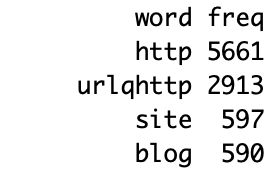You have finally decided that you want to do a business analytics curriculum, and want to know what you have in store for you in analytics; you log into the system and find out that there is so many courses available (correct as of July 2020):
Specialisation Core Courses
BC2402 Designing & Developing Databases
BC2406 Analytics I: Visual and Predictive Techniques
BC2407 Analytics II: Advanced Predictive TechniquesSpecialisation Prescribed Electives –
Information from NBS Website
Choose 3 Specialisation Prescribed Electives:AC2401 Accounting Information SystemsBT2403 Service Operations Management
BC2408 Supply Chain Analytics
BC3402 Financial Service Processes & Analytics
BC3405 Lean Operations & Analytics
BC3406 Business Analytics Consulting (I did this)
BC3408 Decision Modelling & Analytics (I did this)
BC3409 AI in Accounting and Finance
New Course Programming for Business Transformation
Business Analytics Core
The three cores are necessary to take and you would not be able to avoid them. Something new to you is probably the addition of prescribed electives, where you can pick 3 modules (or more if you want to) to add up to your final degree in Business Analytics!
Business Analytics Sub-specialisations
Something you may want to note is that in Business Analytics we unofficially have sub-specialisations too! I have classified according to how seniors have looked at how the courses fit in and also added my own opinion with regard to the newer modules.
Finance Analytics Track:
AC2401 Accounting Information Systems (Sem 1 & 2)
BC3402 Financial Service Processes & Analytics (Sem 2)
BC3409 AI in Accounting and Finance (Sem 2)
Operations Analytics Track:
BT2403 Service Operations Management (Sem 1)
BC2408 Supply Chain Analytics (Sem 2)
BC3405 Lean Operations & Analytics (Sem 1)
Management Science & Analytics Consulting Track:
BC3406 Business Analytics Consulting (Sem 2)
BC3408 Decision Modelling & Analytics (Sem 2)
New Course Programming for Business Transformation
What modules did I pick?
Prior to my year, there were modules which form a marketing analytics track. I was really interested in taking those modules, but unfortunately they were no longer offered. I decided to go with the next best alternative, which was in Management Science & Consulting. I took BC3407 R & Python, now restructured to the GER-Core BC0403, as well as BC3408 Decision Modelling & Analytics and BC3406 Business Analytics Consulting. On top of that, I stayed true to my initial interest by doing an unrestricted elective which is offered by the marketing department, BM2507 Marketing Analytics (Unfortunately not a Business Analytics Prescribed Elective though moving forward I hope it gets approved as one as inter-disciplinary knowledge is increasingly important).
While not the most commonly picked modules by most Business Analytics students, with very little seniors with precedent knowledge, I believe that benefitted greatly from taking the modules which I have taken and look forward to sharing more.
What modules should you pick?
At the end of the day, there is no fixed best modules to take, but rather what aligns with your passion and purpose. My advice is to picture where you see yourself in future, and take the modules to build yourself in that direction. Hope this helps with your module planning!
If you liked our post, do follow us on our LinkedIn, or our writer’s personal LinkedIn Account for more tips.
Now that you are done with planning your prescribed electives, you may want to read about general and unrestricted electives over here.
You may also be interested to pick between business and marketing.
Here’s another blogpost from a senior which I previously got some reviews and found really helpful!
Photo Credits: Photo by Wengang Zhai on Unsplash














